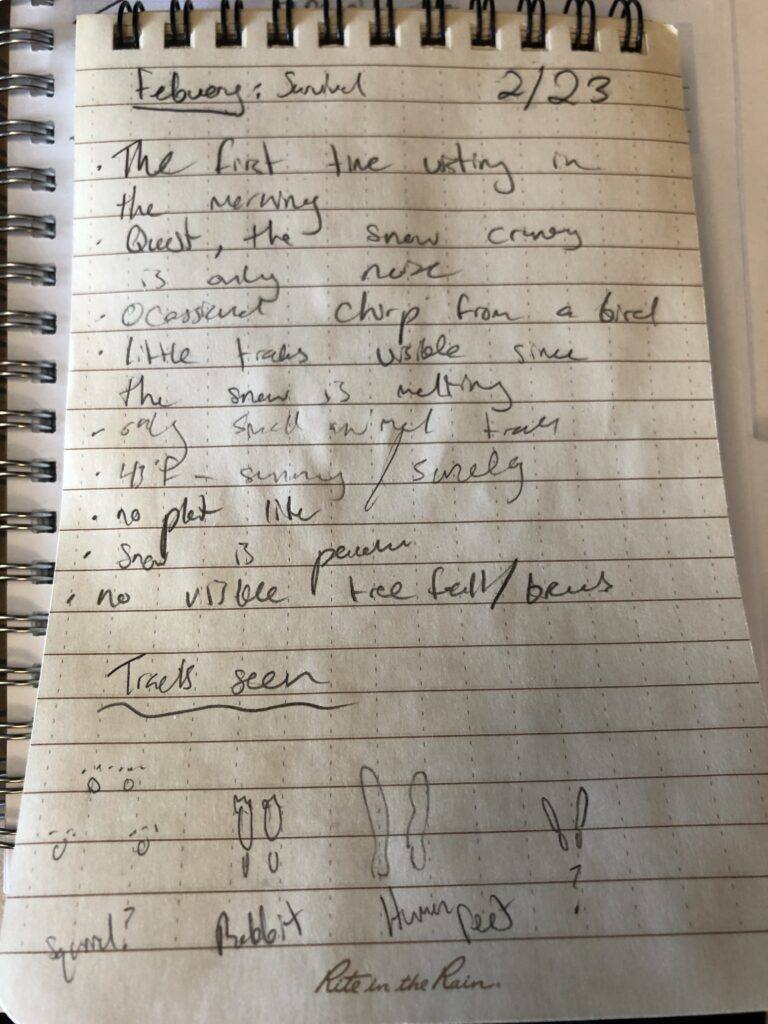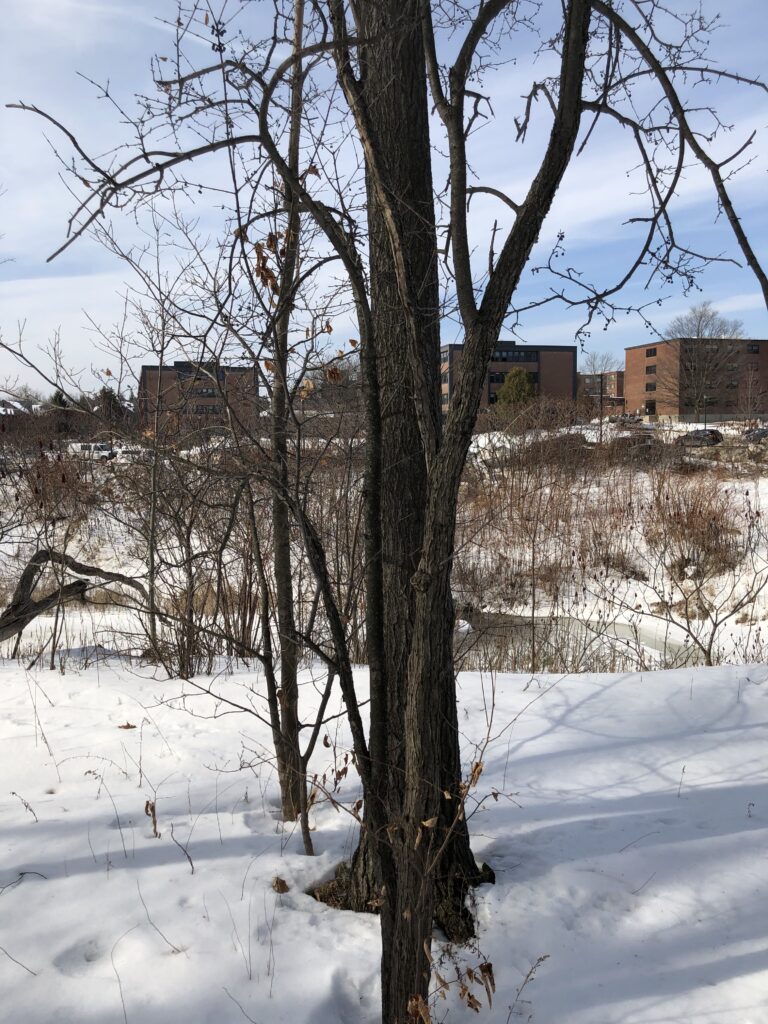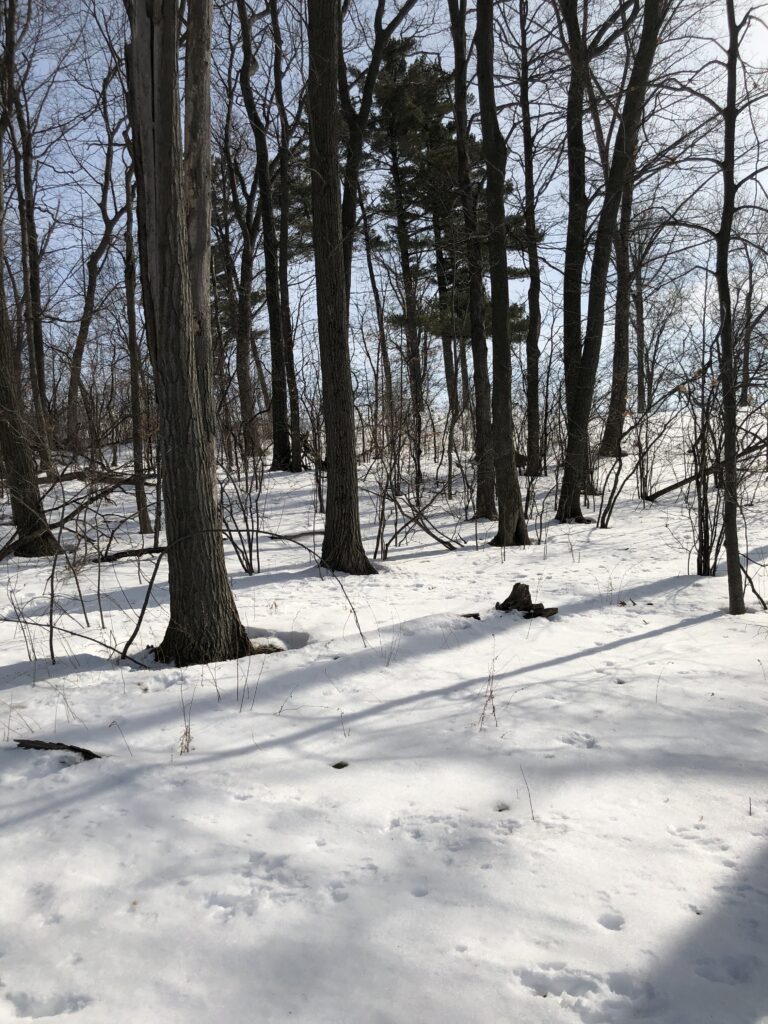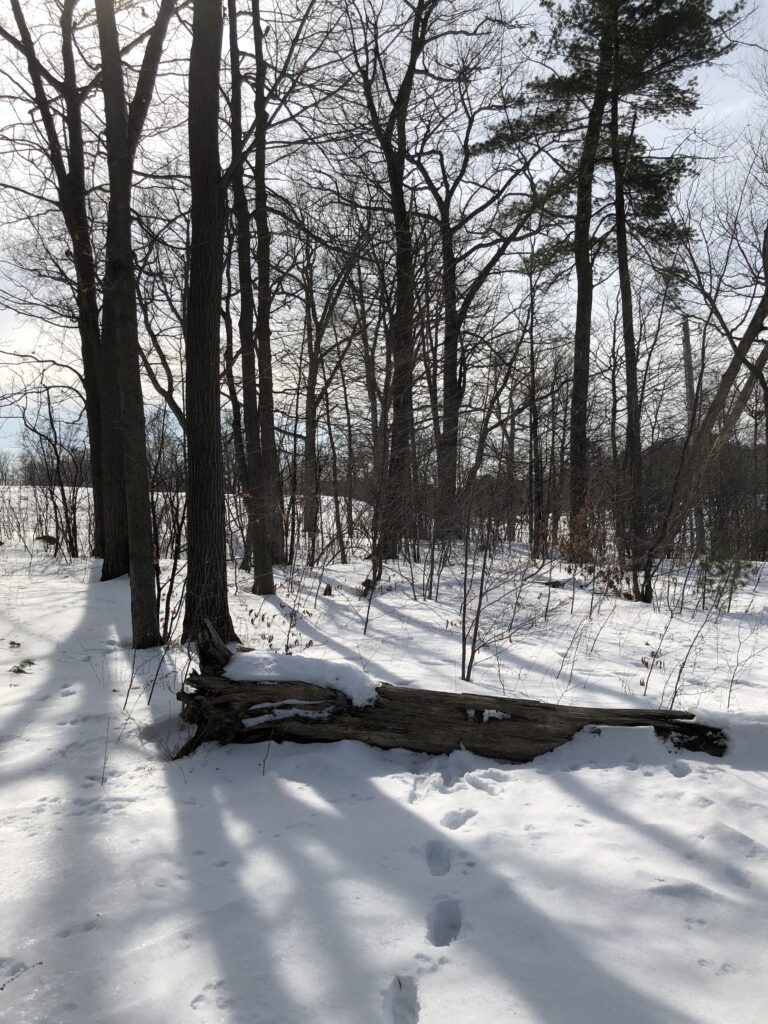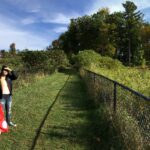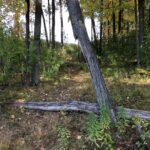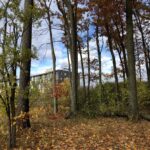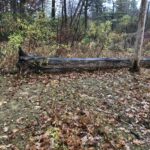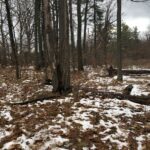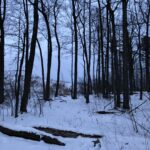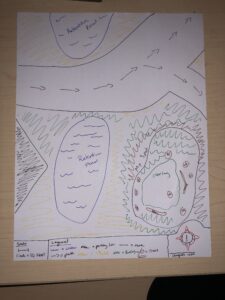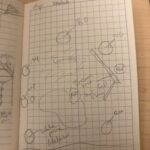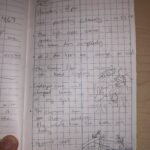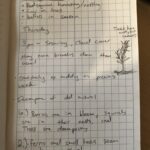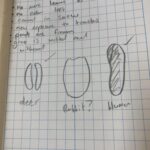My Spot
Wildlife Activity
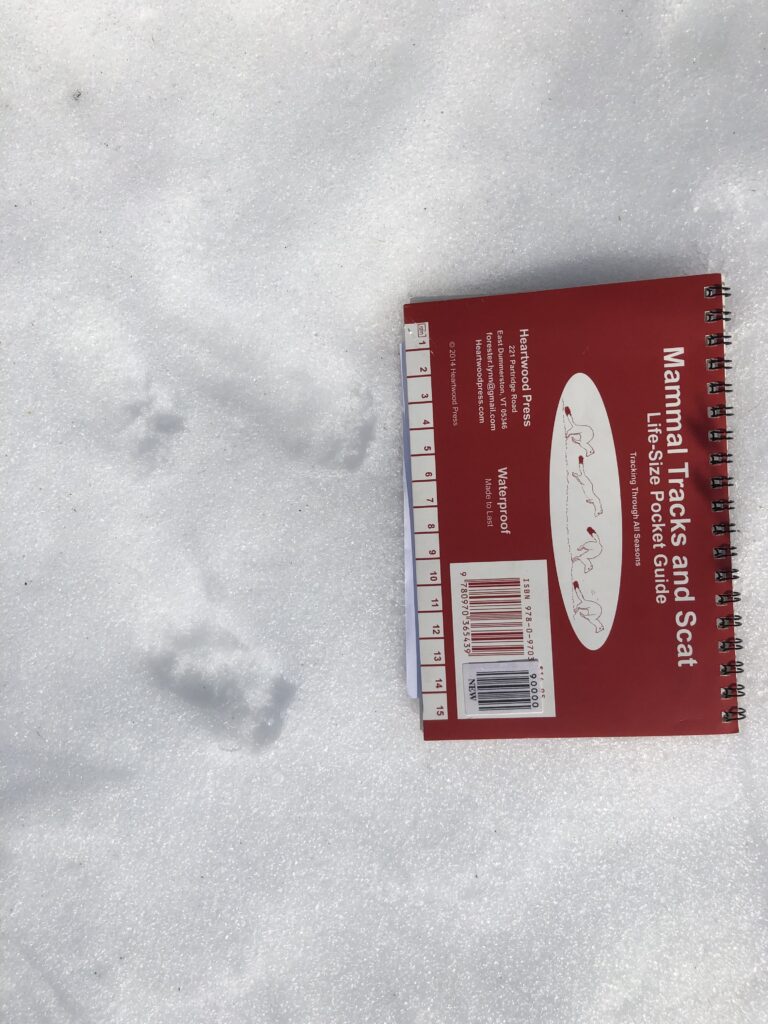
Grey Squirrel 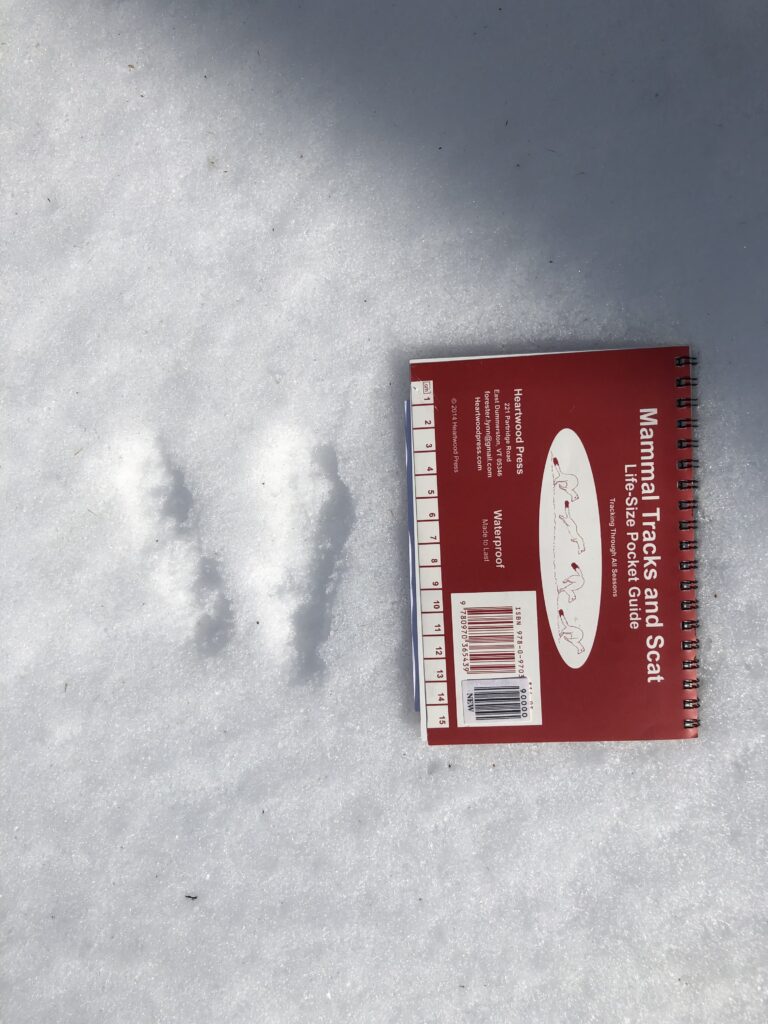
Cottontail Rabbit 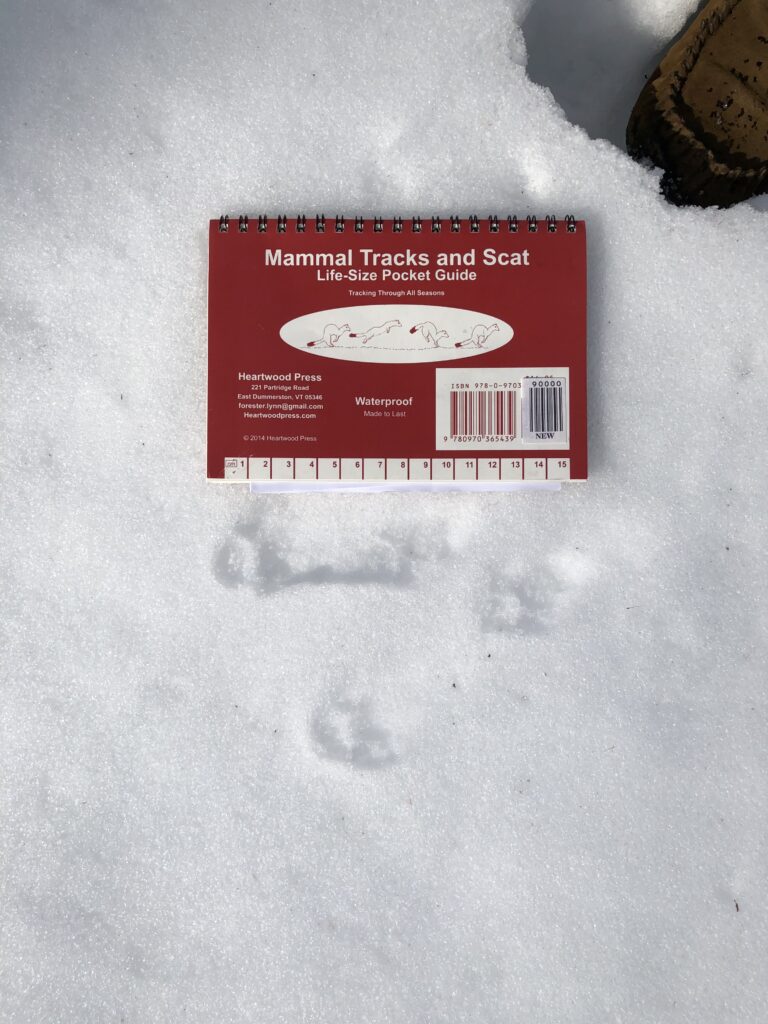
Shrew 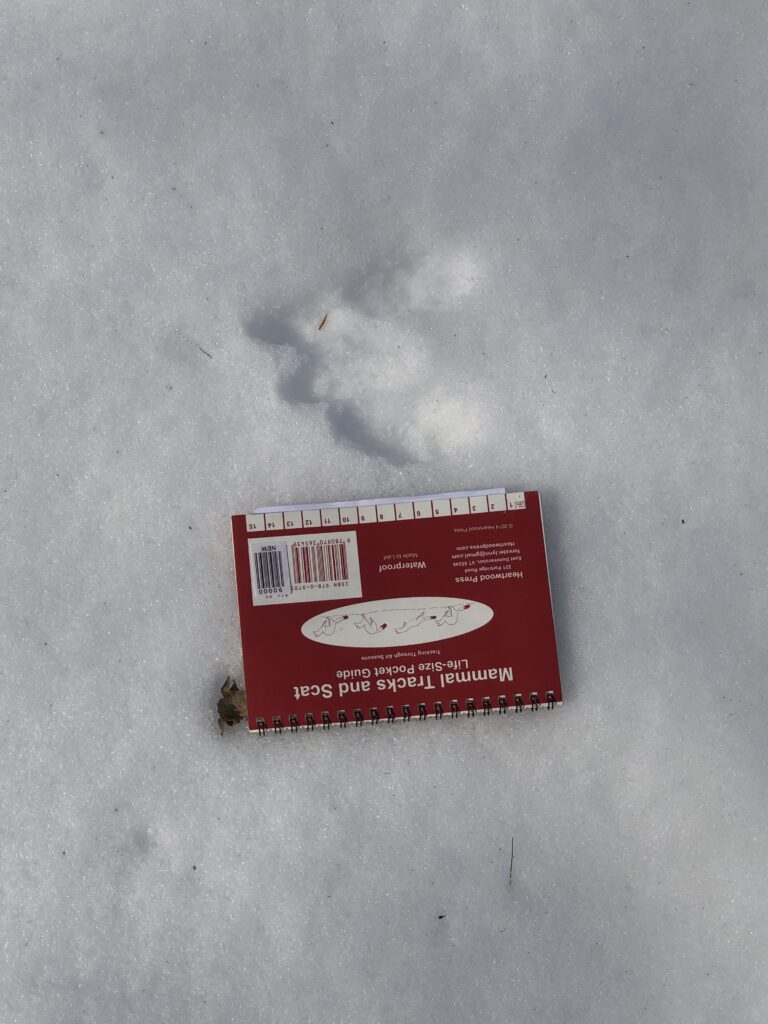
Cottontail Rabbit
Earlier in the morning on Sunday, the amount of wildlife that was visible was limited with only the occasional chirp of a bird. What was visible were tracks and signs of life that often frequents the area. Using the Mammal Tracks and Scat guide I was able to distinguish three different types of animals that interact within that area, being Grey Squirrel, Cottontail Rabbit, and Shrew. The gate and track size for both the Squirrel and the Rabbit were distinct enough to say with certainty that it is the respective animals, but the shrew was a long shot. The data found and presented in the guide varied little but it was the only thing that closely matched, leading to my assumption. The most common tracks I saw were the Rabbit and Squirrels with almost no other tracks sighted besides the one set of shrew tracks. What else is there that I cant see though? Birds are hard to track unless you physically see them, how often are they there? A game trail camera would be interesting to place and just observe.
Levine, L., & Mitchell, M. (2014). Mammal Tracks and Scat (Life-Sized Pocket Guide). East Dummerson, Vermont: Heartwood Press.
Grey Squirrel
The grey squirrel is a mammal that is native to the state of Vermont. I have seen tracks, nests, and holes in the snow that match perfectly with the Grey Squirrel. This medium sized tree squirrel uses its thick coat and body fat to stay awake all winter. Although it does not hibernate, to slow down its metabolism it sleeps for a majority of the day, limiting the burning of crucial calories. When it is up during the day, it will scavenge for food such as nuts, seeds, and buds and dig up acorns that it has buried in warmer months. At night it remains in its nest and sleeps, even though it sleeps for mots of the day. The main predators in the Northeast of the United States are hawks and foxes (Web).
There are many different interactions that the squirrel experience in its habitat, the main two are its relation to the oak tree and to truffles. The relationship shared with the oak tree is a very strong one, being the squirrel does many things in oak trees. Build nests, gather branches and twigs for the nest, eats the acorns on the tree, buries the acorns, and spreads the seeds for the tree to create saplings. On top of all of that, the stored acorns underground that squirrels forget about is just like planting a seed for a new tree to grow, which is just like its other relationship (Levine). The squirrel can eat truffles, which when eaten, processed, then expelled, spread the spores to grow in new locations (Fitz). Both species of plant benefit from this relationship as do squirrels showing a mutual flourishing. These relationships can be found in most areas where the squirrels can be found.
Fitz, M. (2016, November 9). Squirrels and Truffles. Retrieved February 23, 2020, from https://fitznaturalist.com/2016/11/09/squirrels-and-truffles/
Levine, L., & Mitchell, M. (2014). Mammal Tracks and Scat (Life-Sized Pocket Guide). East Dummerson, vermont: Heartwood Press.
Web, A. D. (2020). Critter Catalog. Retrieved February 23, 2020, from http://www.biokids.umich.edu/critters/Sciurus_carolinensis/
Phenological Changes
Compared to the month of January, the changes into February are very slim, the only major difference is that there are no more residual leaves clinging on to trees. Another thing different from last month is the snowfall, there is much more snow than last time which has led to everything that has fallen like branches and leaves to be concealed by the deep snow, unlike last time when the snow wasn’t deep enough to hide everything. It is also much warmer, unseasonably warm one would say, it was 43 degrees Fahrenheit when I went to my spot when last month it was a mere 15, a remarkable difference for a little less than a month apart in the same spot. The warmth is changing nothing as of now though for today was a warmer day and has not been the trend of the whole month, as far as next month goes, I expect a warmer temperature and less snow to be on the ground. As well as it being harder to find evidence of animal activity, but more physical animals and plants emerging from winter hibernation.
Field Notes
